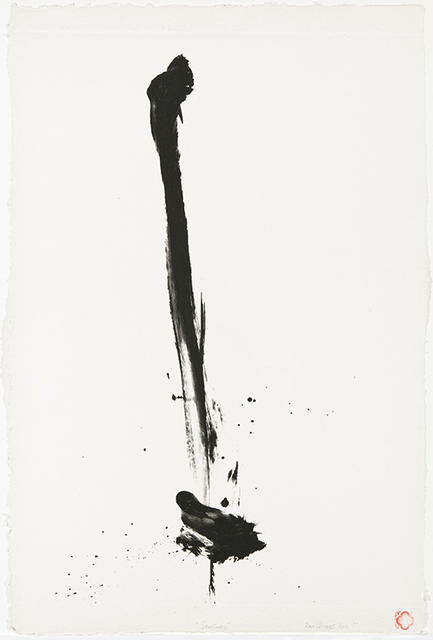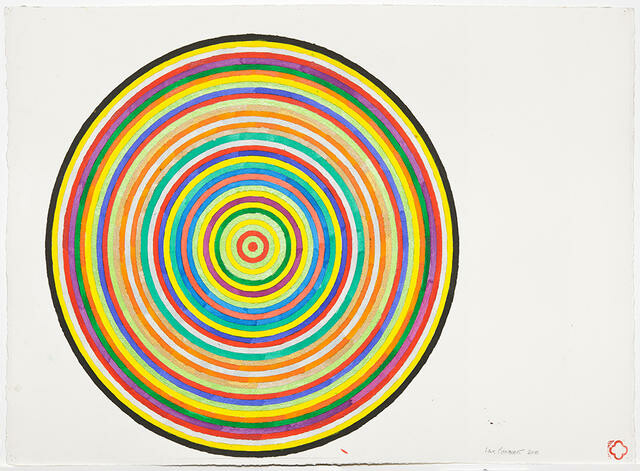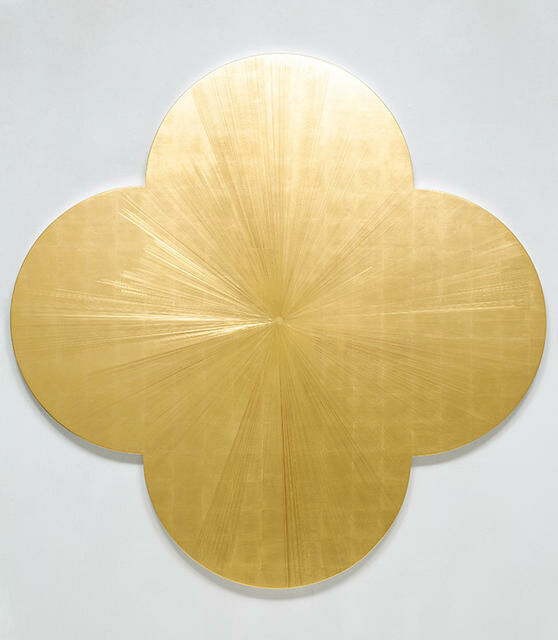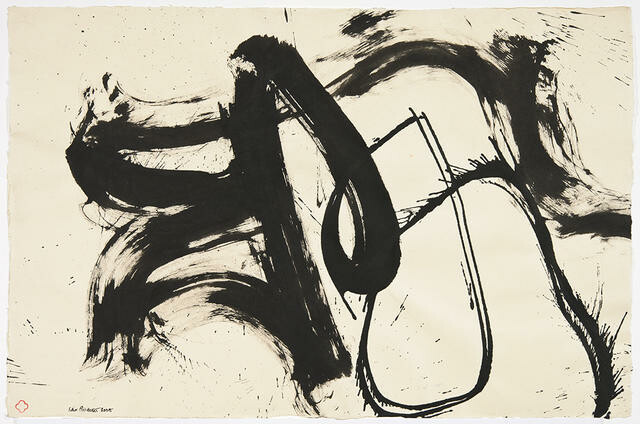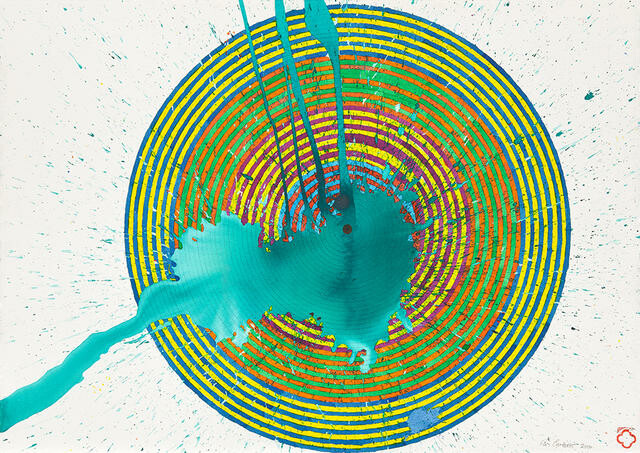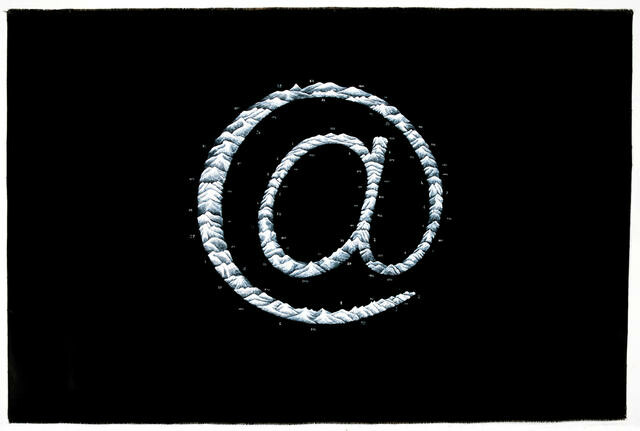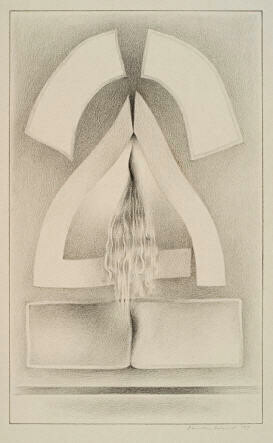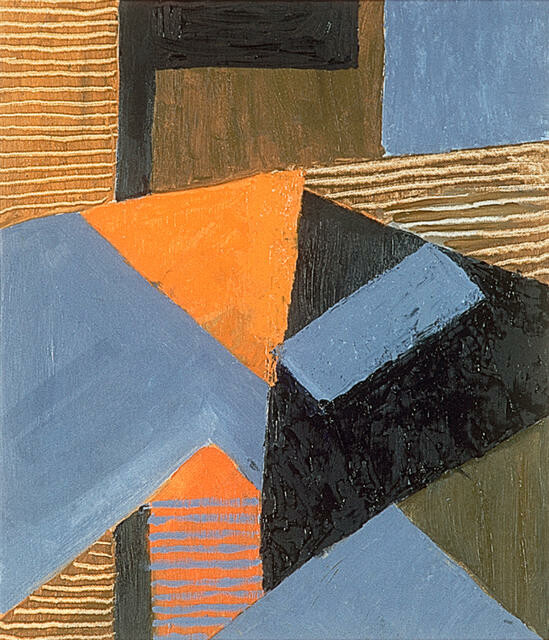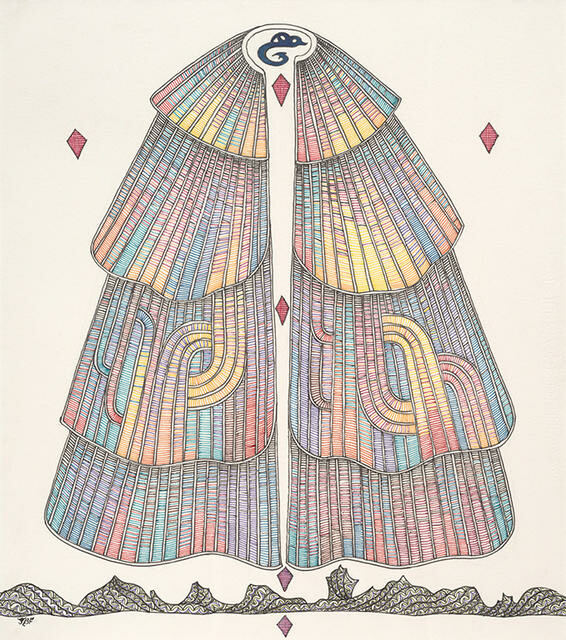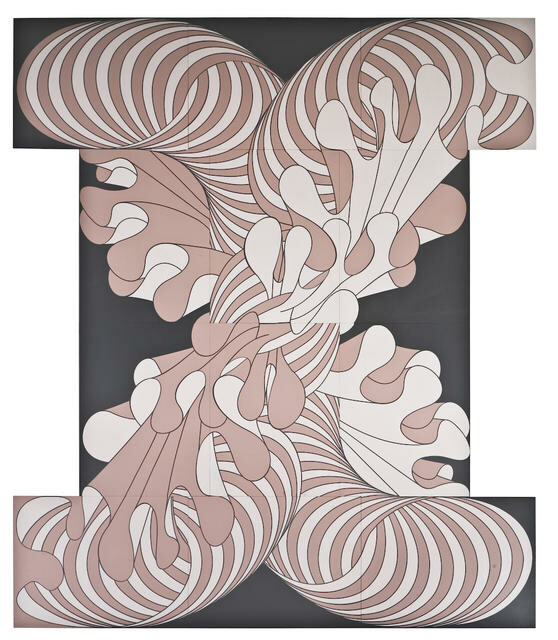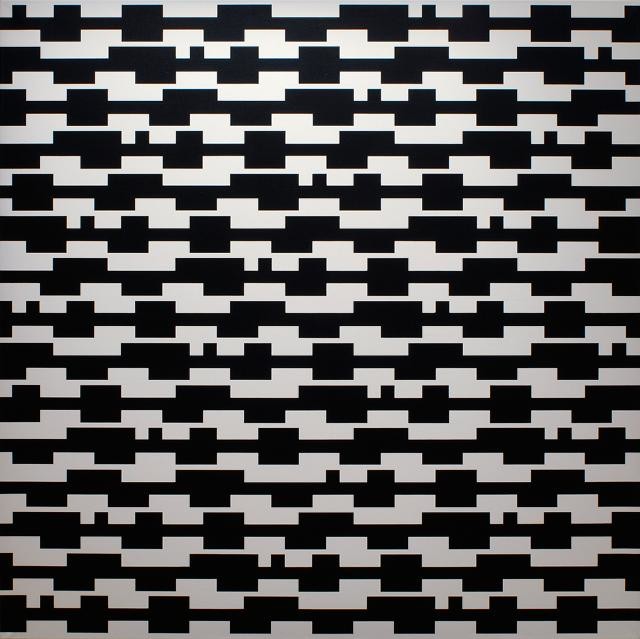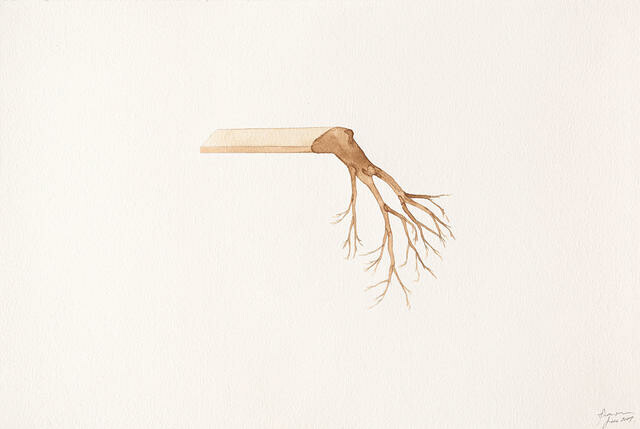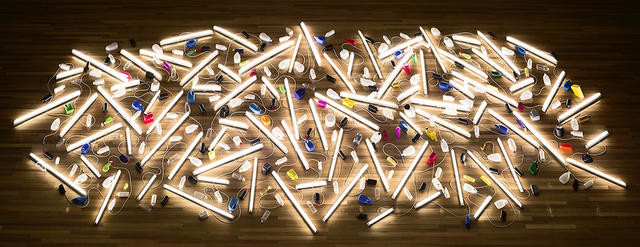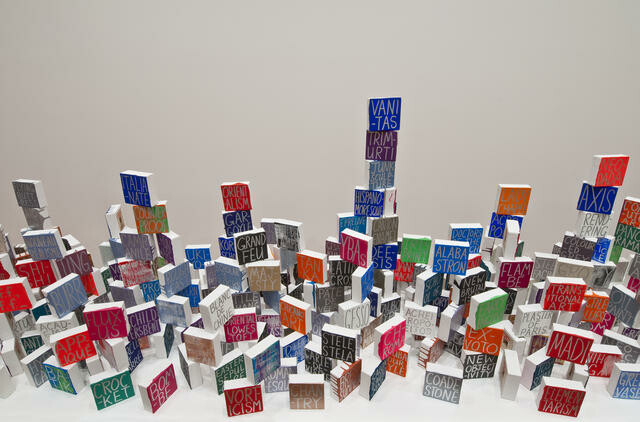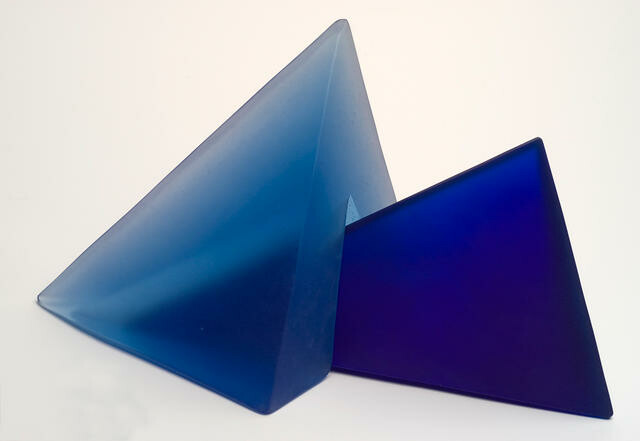Semiotics and the subconscious
By Zizi Averill
Semiotics is the study of the effects of signs and symbols on the human mind. The science follows the patterns of human recognition and connection of images. These connections are made subconsciously within the mind. These works, by using the principals of semotics are able to communicate vast conceptual depths, with simplified shapes and forms.
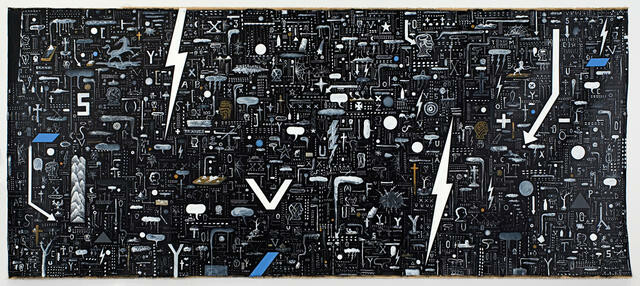
Tony de Lautour Underworld 2 2006
In the role of the urban bricoleur, (collector of objects and images), Tony de Lautour gleans imagery found in comics, on the streets (such as tattoos) and advertising logos. Underworld 2 combines a myriad of haphazard symbols and shapes, seemingly painted at random. The artist’s use of dots and dashes however, serves to bring order and structure to the optically disconcerting composition. Lightning bolts, arrows, stars, speech bubbles and splices of landscape all punctuate the work and form a collective entity. Highly charged and loaded with a network of connected ciphers, this luxurious canvas causes the viewer to re-evaluate assumptions made about history, culture and contemporary society.
Tony de Lautour was born in Melbourne in 1965. He graduated with a Bachelor of Fine Arts in Painting from the University of Canterbury, Christchurch in 1988. He has exhibited regularly throughout New Zealand since 1990, including ‘A Very Peculiar Practice’, City Gallery, Wellington, 1995; and ‘Failure?’, Next Wave Festival, Linden Gallery, Melbourne, 1996. In 1995 de Lautour received the Premier Award in the Visa Gold Art Award.

Max Gimblett Christchurch Enso 2011
Max Gimblett, the artist, Jungian and Buddhist is telling me that, in a former life, he used to be a beagle. This would be a surprising thing to learn about almost anybody else, but at the end of an hour with Gimblett it does not surprise me very much.
We had a most interesting conversation on this theme. He says, "I chase balls. If a ball went through, then I'm after it." I say, only slightly incredulously, "You were a beagle?"
"I was a beagle," he says, firmly. "Tail goes up. I'm off."
"How," I say, "do you know you were a beagle?"
"How do you know anything?" he says.
"You do look," I say, peering at his nice friendly face with the slightly furrowed brow and the flop of hair, "a bit like a beagle."
He does a brilliant sniffing thing with his nose, exactly like a beagle, and if you had seen it you would not scoff at the idea that a man might have been a beagle in a previous life either.
I suspect, though, he may have been pulling my leg. Who knows, really? He is a mystical sort of fellow, given to serious, mysterious pronouncements punctuated by jokes at unexpected moments.
By Michele Hewitson

Max Gimblett Guggenheim Enso - 12/25 2009
Max Gimblett is the grand master of abstract painting in New Zealand. On his frequent visits from New York (where he has been based since 1972), the New Zealand art world celebrates his return with a schedule of exhibitions and events countrywide. There are many causes for celebration; Gimblett exhibits widely in Europe, the United States, Asia and Australia, his work is represented in major public and private collections around the world, and recently Max has been selected to exhibit in a group show at the Guggenheim Museum, New York in 2009. Not bad for a small boy who sought inspiration from the hallowed halls of the Auckland Museum in the early 1940s.
But the real reason Max is welcomed with open arms is the pure sumptuous and richness of the art work that accompanies his arrival. For over three decades, Max has conducted a rigorous investigation of paint, painting and the role of the painter. His works are born from a well-spring of potent energy that is channelled onto the canvas support. But at every stage of production, he subjects his work to extreme risks, destructive processes and stringent editorship. As a result, his paintings carry a deep inner chord, born from decades of experience and critical evaluation of the type rarely heard in contemporary New Zealand art.
http://www.nadenemilnegallery.com/art/artists/MaxGimblett
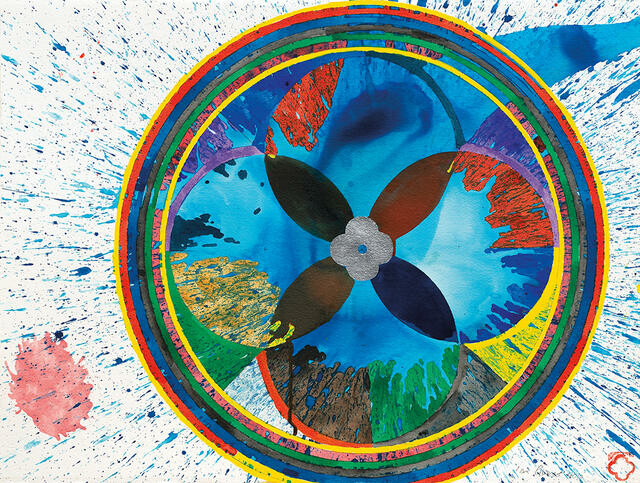
Max Gimblett Ocean Wheel 2010
Max Gimblett’s relationship with print-making spans decades and illustrates key eras of his artistic practice. The New Zealand Suite from 1979 sits within Gimblett’s geometric painting series from this period. His early influence in Eastern culture and philosophy is also evident in the titling and visual simplicity of these works. More recently produced lithographs and screenprints show important developments in his work such as the employment of the quatrefoil shape, and his move to more gestural mark-making. Many of his recent works are unique within a series of screenprints and use a range of metallic foils.
http://www.gowlangsfordgallery.co.nz/editions/maxgimblett.asp

Ralph Hotere Malady Panels 1971
A poem by Bill Manhire was the inspiration for this series of paintings. It repeated the words ‘malady’, ‘melody’ and ‘my lady’ and the repetition, simplicity and strong emotion of the poem appealed to Ralph Hotere. ‘Melody’ and ‘malady’ come together in ‘my lady’, suggesting that deep-felt love can be both a sickness and a delight.
The fine circles in the paintings suggest the fragility of love, and their intense colour celebrates its beauty. Hotere made several works based on this poem during the early 1970s.
Hotere was born in Mitimiti, Northland, and is widely regarded as one of New Zealand’s greatest living artists. He is represented in public and private collections throughout New Zealand. He lives at Port Chalmers near Dunedin.
There is an audio tour available about this work.
Purchased, 1979
Reproduced courtesy of Ralph Hotere
Acrylic on canvas
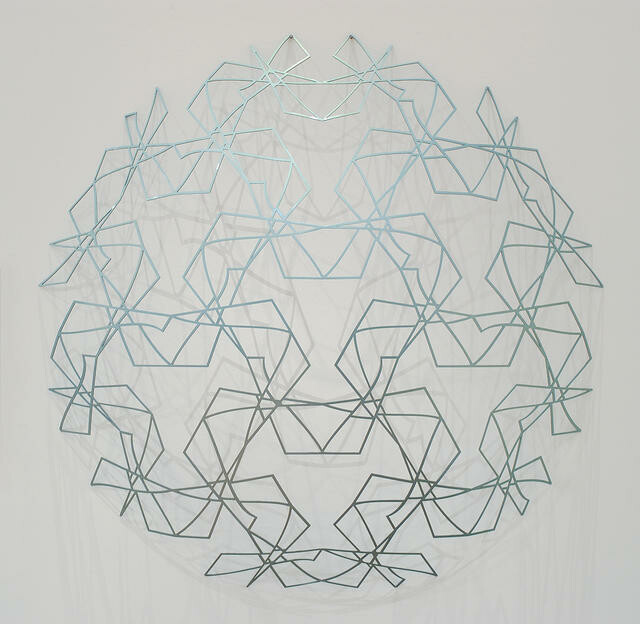
Neil Dawson Shards 2002
Neil Dawson has produced many public sculptures throughout New Zealand, Australia, Asia and the UK. These include representing NZ at the Sydney Biennale in 1988, and at Magiciens de la Terre, Georges Pompidou Centre, Paris in 1989. He created the Main Entry Artworks at the Stadium of Ausralia for the 2000 Olympic Games, and installed Fanfare on the Sydney Harbour Bridge for New Year 2004/05. Within NZ his major public works include Chalice in Cathedral Square, Christchurch, and Ferns in Civic Square, Wellington.
Neil studied at the Ilam School of Art, Canterbury University, and at the Victorian College of the Arts in Melbourne. He received a Laureate Award from the New Zealand Arts Foundation in 2003, and was made a Companion of the New Zealand Order of Merit in 2004.
http://www.neildawson.co.nz/index.php?page=timeline

